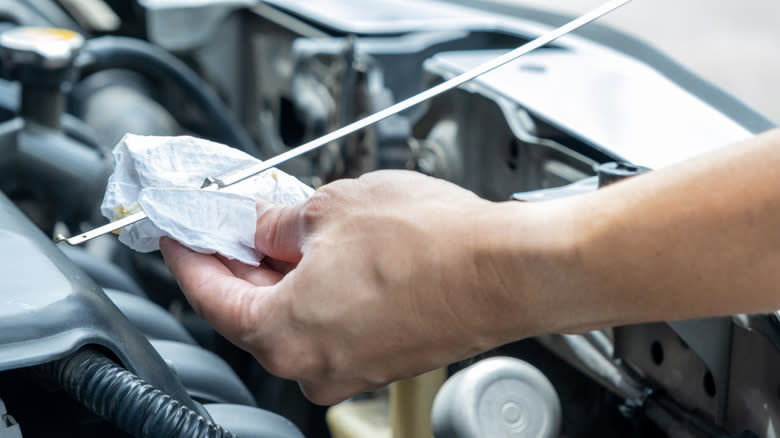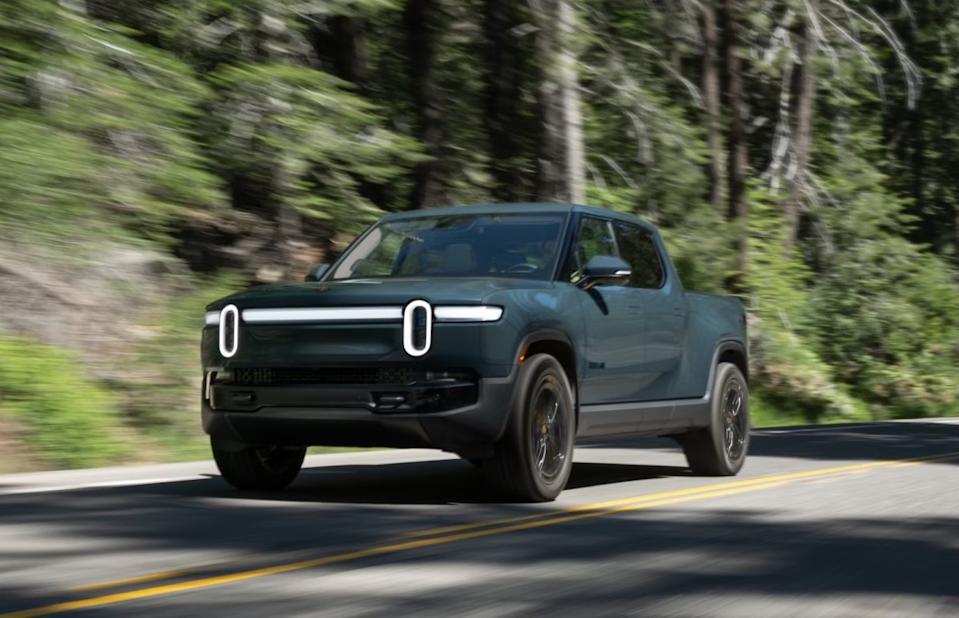
Car ownership is a myth-filled world, where some myths transcend from one generation of car owners to the next. We can't exactly figure out when rumors about GMC trucks having thicker steel than Chevys began, and one of the dumbest car myths we've heard is that reversing a car when the engine is cold will cause permanent and irreversible engine damage. Moreover, the worst car myths that continue to linger include the notion that lifetime fluids never need replacement.
Speaking of fluids, engine oils have their fair share of myths that refuse to fade. One of 'em is that thicker oil, or one that has a higher viscosity rating, offers better protection than thinner, low viscosity oil. The truth is that choosing the right oil based on the expected ambient temperature is far more effective than debating whether thinner or thicker oil is better.
If the owner's manual recommends 5W-30 synthetic oil in the summer and 0W-40 in the winter, stick to it and you'll be fine. Unfortunately, more oil myths need debunking, and we've identified four that persist despite the wealth of reliable information online.
Read more: Save Your Engine: 5 Tips For Preventing And Cleaning Carbon Buildup
Dark Oil Means Dirty Oil And Needs Draining ASAP

Modern synthetic oils contain additives, detergents, and friction modifiers that begin working immediately after starting the motor. Fresh oil has a mostly dark golden hue, but it's relatively normal for it to darken or turn black as it cycles all over your engine. For starters, heat cycling the engine from cold to hot to cold again will naturally darken the color of your engine's oil. Furthermore, additives in modern synthetic oils tend to darken or undergo a color change when repeatedly exposed to heat, pressure, and oxidation.
In addition, engine deposits and sludge have a dark brown or black color, and fresh oil will naturally darken as it breaks down and absorbs dirt and contaminants. The same applies to diesel engines that produce more soot than a comparable gasoline car, which is why diesel oil tends to turn black quicker after an oil change. In short, oil that changes color means the fluid is doing its best to clean and lubricate the engine, and the color of the oil has no bearing on when it's time to change it. A safer bet is to consult the owner's manual to know more about the recommended oil change intervals for your car.
Switching From Conventional To Synthetic Oil Will Cause Leaks

Contrary to what others might say, it's relatively safe to switch from conventional oil to full-synthetic blends for older engines. The myth about synthetic oils causing oil leaks dates back to the early '70s, when early formulations of synthetic oils contained ester, a chemical compound with advanced detergents to prevent sludge and lubricants to maintain the integrity of rubber seals.
Then again, scientists and researchers found out that repeated and prolonged exposure to esters causes the seals to swell and degrade, leading to unexpected oil leaks. Fortunately, oil manufacturers have shunned using esters in their synthetic oil products, and even Porsche recommends synthetic oil for vintage classics, such as air-cooled 911s and the iconic Porsche 356.
Moreover, your engine probably needs new oil seals if leaks are present, and it has nothing to do with switching from conventional to synthetic oil. Perhaps the only downside to choosing fully synthetic oil is the cost, since you'll spend more at every oil change. The added money is worth it, though, since synthetic oils can last up to 8,000 or 10,000 miles between oil changes.
It's Okay To Skip Oil Changes After Topping Up The Motor With Oil

Not all engines are the same, as some have a propensity for consuming more oil than most. In some makes and models, their engines can burn enough oil to deplete the oil pan significantly enough to illuminate the low oil light, even before the factory-recommended oil change interval. We're talking about some Subaru Forester models, GMC SUVs, and high-end BMWs with 4.4-liter V8 engines, according to Consumer Reports.
On the flip side, some cars like the legendary Honda S2000 can burn a quart of oil when stretching its high-revving VTEC engine to the limit, and it's typical for S2000 owners to have a quart or two of fresh oil in the trunk for instant replenishing. You're a good driver if you inspect the oil level periodically and add oil when needed. However, you deserve a spanking if you think it's okay to skip an oil change after topping up the engine.
Adding fresh oil to maintain a solid level is different from adhering to regular oil changes. Changing the oil frequently and insisting on using oil with the correct viscosity is one of the surefire ways to extend the life of your car's engine.
You Don't Need To Replace The Oil Filter At Every Oil Change

Skimping on oil changes will inevitably turn old, dirty oil into sludge. However, skipping oil changes and not replacing the oil filter is a double whammy, but not in a good way. Dirty or clogged oil filters can reduce oil pressure and impede oil flow to critical engine parts, leading to premature wear and tear, increased engine heat, and reduced fuel economy. The worst-case scenario is an overheating engine and thousands of dollars worth of damage and labor, all because of an oil filter that costs anywhere from under $10 to around $100.
Make it a habit to replace the oil filter whenever changing the oil. Don't forget to lubricate the new oil filter gasket with fresh oil before re-attaching it to the block. And while you're at it, resist the urge to tighten the oil filter using an oil filter wrench, since hand-tightening it is enough to form a leak-free seal.
Want more like this? Join the Jalopnik newsletter to get the latest auto news sent straight to your inbox...
Read the original article on Jalopnik.





Comments